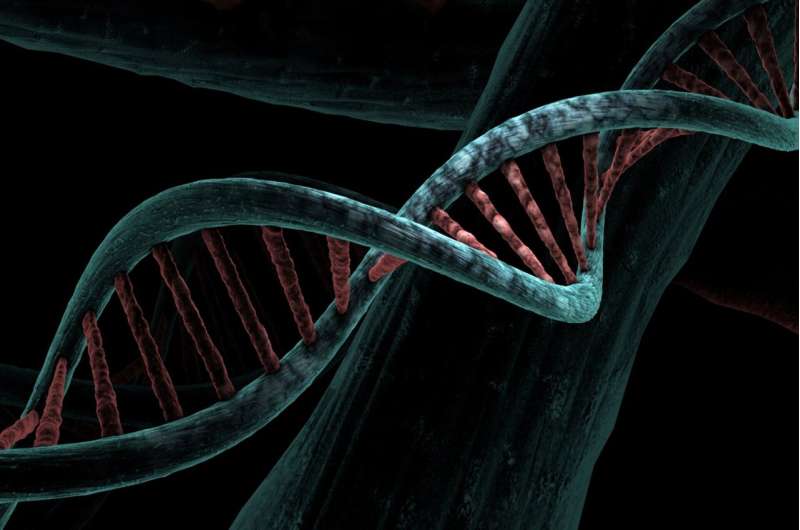Credit: Pixabay/CC0 Public Domain
Researchers from Children's Hospital of Philadelphia (CHOP) have identified a causal genetic variant strongly associated with childhood obesity. The study provides new insight into the importance of the hypothalamus of the brain and its role in common childhood obesity, and the target gene may serve as a druggable target for future therapeutic interventions. The findings are published in the journal Cell Genomics.
Both environmental and genetic factors play critical roles in the increasing incidence of childhood obesity. While the exact role of genetics in childhood obesity is still not fully understood, prior studies show that neuronal pathways in the hypothalamus control food intake and are key regulators for the disease.
Prior international genome-wide association studies (GWAS) led by CHOP investigators found specific genetic markers, or loci, linked with obesity. Most of these studies revealed loci associated with childhood and adult obesity in equal measure, and most of these loci have been in non-coding regions of the genome, which means they do not code for specific proteins, making their mechanisms much more difficult to study.
This latest research focused on chr12q13, a locus harboring the nearby gene FAIM2 that generated a strikingly stronger signal with childhood obesity when compared to adult obesity.
"By focusing specifically on this locus, we were able to pinpoint a causal variant associated with one of the strongest genetic signals we have implicated in childhood obesity," said first study author Sheridan H. Littleton, Ph.D., a postdoctoral research associate who conducted this work as a member of the Center for Spatial and Functional Genomics team at CHOP.
"With more research, there's potential to learn how the target of this variant's action may be a target for new therapies specifically designed to treat childhood obesity."
In addition to childhood obesity, the locus in question has been found to be connected to a variety of related health issues, including elevated type 2 diabetes susceptibility, increased body fat percentage in children and adults, and earlier age of menstruation. Using a variety of techniques, the researchers narrowed their focus on rs7132908, a single nucleotide polymorphism (SNP), or variant, at the locus.
Prior related CHOP research implicated the hypothalamus in appetite, a trait that could be linked to childhood obesity. Since the hypothalamus is deep inside the brain, it is particularly challenging to study.
To further study the effects of the rs7132908 variant, the researchers used stem cells that evolve into hypothalamic neurons, a key cell type associated with eating behavior, to study the variant's alleles. The allele associated with obesity risk influenced how the FAIM2 gene was expressed and decreased the proportion of neurons produced when the stem cells differentiated, suggesting that the variant is also associated with neurodevelopment.
"In spite of a series of challenges, a study like this demonstrates how extra effort can reveal important information about hitherto uncharacterized genetic variants and the role they play in a variety of childhood and adult illnesses," said Struan F.A. Grant, Ph.D., Director of the Center for Spatial and Functional Genomics and the Daniel B. Burke Endowed Chair for Diabetes Research at CHOP.
"This work further underscores how the brain is central to the genetics of obesity and provides us with a strategy for further study."
More information: Littleton et al, Variant-to-function analysis of the childhood obesity chr12q13 locus implicates rs7132908 as a causal variant within the 3' UTR of FAIM2, Cell Genomics (2024). DOI: 10.1016/j.xgen.2024.100556. www.cell.com/cell-genomics/ful … 2666-979X(24)00122-8
Journal information: Cell Genomics
Provided by Children's Hospital of Philadelphia
























